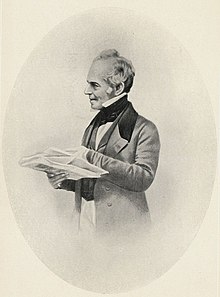Robert Lucas Chance
 Robert Lucas Chance (1782-
Robert Lucas Chance (1782-
Robert was born on 8th October 1782 to William Chance, a founder of Nailsea Glassworks, and Sarah Lucas. Known as Lucas by his family and close friends, he joined the family business in Birmingham aged 12 and was made manager by the age of 14. In 1803, at the age of 21, he became partner in the Nailsea Glassworks and took over all management responsibilities. He married Louisa Homer, daughter of Edward Homer and Mary Lucas, in 1811 at Babcary, Somerset.
In 1824, Robert bought the British Crown Glass Company glassworks in Spon Lane, Smethwick for £24,000. He went into partnership with John Hartley four years later, and established Chance Glass. In 1832, the company ran into financial difficulty and was saved by the investment from his brother, William Chance. Then, following the dissolution of the partnership with Hartley’s sons (who had inherited his share of the business upon his death in 1833), the business was renamed Chance Brothers and Company.
With the help of George Bontemps, the famous French glassmaker, the company went on to become amongst the first glass manufacturers to carry out the ‘Cylinder’ process to produce sheet glass in Europe. Far superior to the earlier Crown glass, sheet glass allowed Robert to dominate the production of window glass for the next few decades. The company would provide glass for the Chatsworth conservatory, the new Houses of Parliament in 1848, and 300,000 panels for the Crystal Palace, which housed the Great Exhibition 1851. This new method, along with the repeal of the Window Tax in 1851, lead to a significant lift in the success of the business. The Alkali Works were also established in Oldbury in to supply the glassworks with the chemicals they needed at their factory for the manufacture of glass.
Robert’s nephew, James Timmins Chance (William Chance’s son), also made a significant contribution to the company. His expertise in mathematics and understanding of optics and dioptric lenses aided the company’s expansion into manufacturing lighthouse apparatus. He joined and became a partner in the company in 1839, and by 1848, the company had established a plant for the manufacture of optical and dioptical glass for use in telescopes and camera lenses. From 1851, the company would become one of the world leaders in producing lenses and equipment for lighthouses around the globe. Under the direction of James Chance, the company revolutionized lighthouse designs with the use of the fresnel lens, invented previously by French physicist Augustin-
Robert Lucas Chance died on 7th March 1865, aged 82. He is buried in Key Hill cemetery, Birmingham.